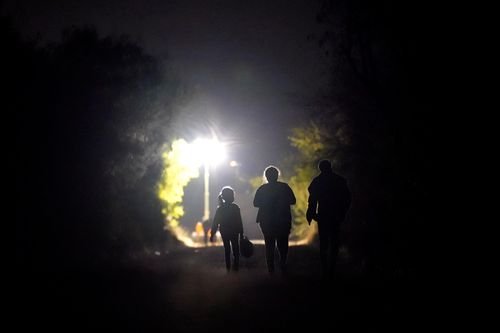Ways to support humanitarian aid at the US-Mexico border

More than 2 million migrants are expected to make it to the US-Mexico border by September, according to internal government estimates reviewed by CNN.
That number — a record high — includes an estimated 828,000 families and more than 200,000 unaccompanied children who are expected to arrive by the end of this fiscal year.
Many of those trying to cross into the US are single adults who will be turned away. But some families and children will be allowed to enter. The Biden administration will need thousands of additional beds through September just to keep up with the projected influx.
The pandemic has crippled the economies of many Latin American countries, leading many families to make the dangerous trek to the US border. Rampant Central American gang activity is another reason some are desperate to escape their home countries.
On CNN’s Politically Sound podcast, CNN Political Director David Chalian spoke with Melissa Lopez, the executive director at Diocesan Migrant & Refugee Services in El Paso, about the ongoing crisis. To learn more, you can listen to the whole episode here.
If you want to help, there are organizations mobilizing to provide humanitarian aid, advocacy and legal services in support of migrant children and their families.
Humanitarian aid on the ground
Save the Children is supporting asylum-seeking migrant children and families through its US Border Crisis Children’s Relief Fund.
The non-profit says donations will go toward the distribution of hygiene items and creating safe spaces where families and children can play, rest, and find emotional support.
The Red Cross says it is providing humanitarian aid by distributing cots, blankets, hygiene items, masks and hand sanitizer to local non-profits caring for migrants in Texas and California.
Advocacy and organizing
United We Dream says it is the largest immigrant youth-led community in the country. Among the organization’s initiatives are working to prevent deportations, providing education access for immigrants, prioritizing justice for the undocumented, and uplifting LGTBQIA-identifying youth.
The mission of Women’s Refugee Commission is to improve and protect the rights of women, children and youth displaced by conflict and crisis. They aided in the reunification of 9 families separated at the US-Mexico border. To learn more, click here.
National Immigration Legal Services provides a comprehensive directory to help locate and centralize immigration rights resources. The organization says only non-profit organizations that provide free or low-cost immigration legal services are included in their database.
Legal aid and representation
The Innovation Law Lab is a collaborative effort of activists, software coders, lawyers, and graphic designers teaming up to support asylum-seekers along the US-Mexico border.
Project Corazon, a program administered by Lawyers for Good Government, was created to reunite families separated under former President Trump’s “zero tolerance” immigration policy. The organization has partnered with law firms and attorneys to assist immigrants and their families by providing free legal aid. There is also an option to donate airline miles or credit card points to help lawyers travel to clients at the border, detention centers, or to any areas where assistance is needed.
The Refugee and Immigrant Center for Education and Legal Services provides legal resources to low-income immigrants. Among the social services offered is a national hotline to connect migrant individuals and families with resources, and transit support for those who are recently released.